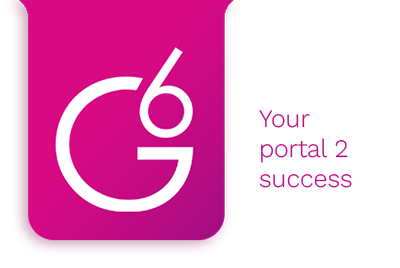Are you looking to make your sales process more efficient and, more importantly, make more money??
Sales pipelines are complex, constantly-changing processes that can be pretty daunting initially.
My name’s AJ! I recently sold my business for multiple seven figures; now, my mission is to help entrepreneurs like you through Small Business Bonfire (SBB.)
I learned a lot while growing my business, including how integral an efficient sales process is for success.
Are you ready to close more deals than you have before? Stick with me! I’ve got all the information you need!
Key Takeaways
CRM pipelines create visual representations of a company’s sales process.
Sales pipeline management ensures your team allocates the proper time and resources to leads.
Utilize automation whenever you can throughout the sales cycle to save time and money.
SBB Featured Partners
Customer relationship management (CRM) software helps businesses manage customer relationships and interactions.
A CRM platform collects and organizes customer data from various sources, including the following:
Customer activity on the company websiteSocial media activityPurchasing history and behaviorsEmail marketing
What’s the goal of customer relationship management?
CRMs help companies stay connected with current and potential customers, streamline daily processes, and increase profits.
A CRM pipeline visually represents your company’s entire sales cycle and the evolution of each customer.
By creating this pipeline, your business can easily organize your potential customers and predict future revenue based on previous statistics.
These past behaviors include the following:
Conversion rateAverage sales cycle lengthAverage contract valueThe average length of the sales process
CRM pipelines ensure your company makes data-driven decisions instead of simply guessing what your next move should be!
A CRM pipeline works like a roadmap to your sales process.
It starts when a potential customer becomes aware of your business and ends (ideally) with a successful sale.
Along this journey, the CRM pipeline breaks down the sales process into distinct stages, including the following:
ProspectingInitial contactQualificationProposalNegotiationClosing the deal
As each prospect moves through these stages, your CRM system tracks their progress.
As a result, your sales team can easily track deal stages and other aspects associated with the sales process.
A CRM and a sales pipeline are essentially the same thing.
A sales pipeline encompasses the various stages a prospective customer goes through as they become a paying customer.
Additionally, sales pipelines show what deals sales reps handle and the stages customers are at.
CRM pipelines differ in that they focus on customer interactions and relationship-building opportunities.
Still, both pipelines help companies identify bottlenecks, learn about customers, and streamline the sales process.
Let’s learn about the benefits of sales CRM systems and why your company MUST implement sales pipeline management software!
CRM sales pipeline customizations can significantly improve your sales process because your team can focus on their most essential tasks.
Some aspects you can customize include the following:
Deal stagesColor schemesUser permissionsRecurring custom fieldsCustom reports and data views
Sales pipeline management software identifies and manages the moving parts of your company.
From product sourcing to sales efforts, pipeline management software ensures your business learns how to optimize processes.
CRM pipelines make contact management more manageable, allowing sales reps to access customer data quickly.
This data includes the following:
Past purchasesAverage order value (AOV) of customersNotes about past conversationsGeneral contact information
Your team can use this information to keep in touch with prospects and personalize each customer interaction.
Sales pipelines also help provide up-to-date information about your business’s products and services.
This information includes things like:
Pricing detailsCustomer reviewsProduct sheets
A sales pipeline ensures your business’s inventory is current and sales reps have everything they need to perform their job successfully.
Sales CRM software collects, organizes, and stores information in a single location.
Data centralization prevents silos, which are pockets of information certain employees or departments cannot access.
Fortunately, standard CRM systems ensure all your company’s information is securely stored in ONE place.
Automated workflows complete mundane tasks that take up a sales rep’s valuable time.
For example, when a customer makes a purchase, you can set up automated workflows to send follow-up emails or thank-you notes automatically.
Most CRM software incorporates workflow automations; every efficient sales pipeline utilizes them!
Another benefit of CRM software is that it helps with marketing operations.
Some marketing aspects a CRM system can help with include the following:
Automating routine tasksSending bulk emailsCreating in-depth reports on marketing campaignsProviding customer informationSegmenting existing customers
Each sales process’s details differ depending on the company, industry, and business size.
Still, here are the general stages of sales pipelines!
The first stage in the sales pipeline is prospecting.
Prospecting is when you find high-quality leads who will likely purchase your company’s products or services.
Understanding your target audience is critical to ensure you identify opportunities that will convert to paying customers.
The next stage is determining which lead generation segments will most likely convert to paying customers.
Most companies assign qualified leads a rank to determine lead qualification quickly.
Once you identify the leads that qualify as potential customers, your team can schedule a live meeting or demo for further review.
During this sales pipeline stage, reps should answer any questions about pricing and features and explain how your products or services can benefit their business.
If your sales team identifies a lead as “qualified,” they should move forward to sending a proposal.
At this stage in the sales pipeline, you can offer customers different pricing options and assessment packages that fit their needs.
Negotiation is an essential step in the CRM pipeline.
During this stage, reps can negotiate terms and conditions to ensure they receive the best possible deal for the company.
The win/loss stage is simple.
At this point, you determine whether your lead converted to a sale or didn’t.
The sales pipeline doesn’t end when your team closes a sale.
A successful CRM strategy focuses on customer retention, meaning you must provide excellent customer support.
Now that you understand the benefits of a CRM pipeline and its stages let’s discuss how to build an effective sales pipeline.
To ensure you have an effective CRM platform that creates efficient sales processes, you must do the following things:
Define your sales pipeline (or multiple sales pipelines)Set goals and objectivesQualify leadsEvaluate your lead sourceAutomate tasks and workflowsAnalyze your results
Building a CRM pipeline is a continuous process, meaning it won’t be perfect the first time you create it.
Sales pipelines constantly change as your customers, industries, and products or services change.
Therefore, you must utilize CRM software to create and analyze in-depth data that identifies what’s working and what needs improvements.
Creating and managing an effective CRM strategy can be challenging, but your company can make it much more manageable with the right sales pipeline software.
Although sales CRM pipelines can be tricky, there are hidden tips and tricks that help simplify the process.
These tips will help your team close deals, create an efficient sales funnel, and accurately forecast revenue!
Lead generation is critical. However, targeting the right leads is even more important, so you focus efforts on the right deals.
Creating an ideal customer profile (ICP) describes the demographics of your target prospects.
Your company’s ICP should include attributes like:
AgeGenderEthnicityIncomeLocationBuying behaviors
You find these attributes from past sales data and your competitor’s target audience!
As you generate leads, some people will be ready to purchase your products or services immediately.
However, other shoppers will be hesitant and need to learn more about your brand before purchasing something.
Therefore, lead nurturing is vital to move prospective customers through the sales process.
Additionally, you can create different nurturing techniques for customers at various stages of the sales pipeline.
For instance, early-stage leads who need to learn more about products or services before purchasing need blog posts or one-on-one conversations.
Understanding the fact that your sales pipeline constantly changes is vital!
Ensure you and your sales team review your pipeline to remove low-quality leads.
Also, remove leads from your pipeline if they don’t interact or show interest in your company.
Still, your team shouldn’t abandon low-quality leads entirely. Instead, put them on a future call list and revisit them monthly.
Tweaking your pipeline regularly ensures your teams implement cost-effective strategies that target and secure high-quality leads!
Additionally, consistent updates ensure your company isn’t spending money on strategies that aren’t effective.
The length of your sales process differs based on your industry, products or services, and business size.
Reducing the length of your pipeline shortens the time to close deals and increases conversion rates.
Therefore, it’s essential to set a specific timeline for every deal and follow a solid step-by-step plan for handling each customer.
To determine the length of your sales process, analyze your past sales data and determine how long each step typically takes.
Look for any way to shorten the length of future sales processes because this makes it more likely to win a deal.
You can shorten your process by automating tasks such as:
Lead scoringData entryEmail nurturing
The secret to any high-functioning sales hub is automation.
Creating a visual representation of sales activity ensures you gain insights into how consumers move through your pipeline.
However, some parts of the pipeline suck up significant time, draining valuable resources and money.
Fortunately, most CRM software includes automation capabilities.
Automations automatically handle specific tasks like data entry and report generation.
As a result, your employees can spend more time on other tasks that demand their creative juices.
Trust me, if you’re not using automation, you’re not getting the most from your sales CRM platform.
A sales CRM pipeline report measures the value of your sales pipeline.
Additionally, these reports show how many deals your company is currently handling, including the stages of each deal.
Pipeline reports ensure your business can track the vital metrics each pipeline stage generates.
For example, some benefits of creating and utilizing pipeline reports include the following:
It gives you a clear overview of your sales processIt monitors your sales managers’ and reps’ progressIt provides accurate sales forecastsIt increases the total sales volume and revenue
Creating pipeline reports can be overwhelming. However, most CRM tools automatically complete this task!
That’s right! One aspect of CRM automation is report generation, including pipeline reports!
CRM pipeline reports are an excellent way to provide your team visual representation of everything happening within sales-related metrics.
If CRM pipelines and pipeline management still sound confusing, allow me to create a simple example!
Imagine you’re running a lemonade stand, and your goal is to sell as much lemonade as possible.
In this scenario, a pipeline is like the steps you take to sell lemonade.
Awareness:
First, you need people to know about your lemonade stand.
So, you put up posters around your neighborhood and tell your friends at school.
Interest:
Next, the people who see your posters or hear from friends become interested and visit your stand.
Evaluation:
When these potential customers visit, they might ask about the price and the ingredients you use or taste a sample of your lemonade before deciding.
Decision:
After tasting and evaluating, potential customers decide whether to buy your lemonade or not.
Purchase:
If your audience likes it, they buy a cup of lemonade and enjoy it.
Repeat:
If your target audience really enjoyed your lemonade, they might come back for more, and even tell their friends about your stand, creating more awareness.
In this example, each step from the awareness to the repeat purchase is a stage in your sales pipeline.
You track every customer at each stage, understand what makes them move to the next stage, and use that information to sell more lemonade.
A sales pipeline tracks each stage your target audience goes through as they change from a potential customer to a paying one!
Pipeline management gathers and analyzes customer data, helping your team close more deals and discover what techniques and strategies lead to more sales.
What advanced features will your team utilize in your CRM system? Let us know in the comments section below!
And good luck creating the most efficient pipeline management strategies for your company!
The post CRM Pipeline Ultimate Guide for SMBs appeared first on Small Business Bonfire.
—
Blog powered by G6
Disclaimer! A guest author has made this post. G6 has not checked the post. its content and attachments and under no circumstances will G6 be held responsible or liable in any way for any claims, damages, losses, expenses, costs or liabilities whatsoever (including, without limitation, any direct or indirect damages for loss of profits, business interruption or loss of information) resulting or arising directly or indirectly from your use of or inability to use this website or any websites linked to it, or from your reliance on the information and material on this website, even if the G6 has been advised of the possibility of such damages in advance.
For any inquiries, please contact [email protected]




